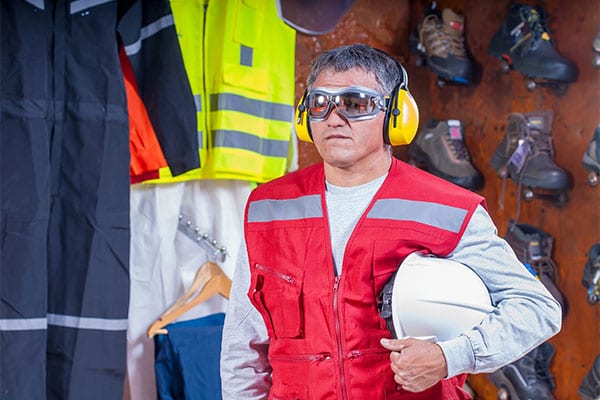Radio Frequency Safety for Tower Climbers
September 4, 2018
Radio frequency safety for tower climbers is an important concern of tower service providers. While falls are an obvious hazard to tower climbers, radio-frequency, or RF radiation can be a serious danger as well. By understanding the issue, as well as the most critical safety procedures, you can maintain consistent, reliable protection from RF radiation.
What is Radio Frequency Radiation?
RF radiation is the transfer of energy from radio waves. Mostly, it is a form of electromagnetic energy (electric and magnetic energy combined) that moves at the speed of light. These waves, which are used in radio and television towers, as well as other types of towers, can create a thermal, or heating, effect. This is the same process that allows microwaves to heat food.
RF radiation, at high levels, is known to have harmful effects to humans. This heating effect can have a damaging impact on climbers servicing towers, including headaches, fatigue stress, trouble sleeping, and burning sensations on the skin. Depending on the length and levels of exposure, RF radiation can lead to hospitalization and debilitation.
Main Sources of Radio Frequency Radiation
There are many sources of RF radiation, but radio and television towers generally emit the highest levels of this hazard. In addition to broadcasting towers, portable-radio systems, microwave antennas, and cellular towers can also emit harmful RF radiation.
Safety Procedures for Radio Frequency Radiation
Fortunately, there are many steps you can take to maintain safety at all times.
Proper Lockout-Tagout Procedures
This is a standard safety procedure that essentially ensures dangerous machines and equipment are correctly shut down while maintenance is performed. It requires the maintenance personnel, in this case, the climber, to lock down the power and leave a tag. The climber then holds the key to the lock so no one but the climber can unlock the power. Utilizing proper lockout-ragout is essential for the safety of climbers.
Disable Remote Operation
In some cases, it is possible for power to be reactivated by a remote user. He or she may not realize the maintenance is being conducted, so completely removing the option of remote operation is crucial during tower maintenance.
Wearing Protective Suits
While avoiding exposure to RF radiation is a critical first step, climbers are often required to wear protective suits in case of exposure. Protective suits include coveralls, hoods, socks, and gloves, and they are usually made from Nomex, a flameproof fabric used in racing. They can also be made from a stainless-steel fabric. These types of garments are worn by climbers who work on radio and television towers, as well as technicians on certain military applications.
Monitors Worn Outside of Suit
In addition to protective clothing, RF monitors are also worn by climbers who may be exposed. These monitors, which are attached to the outside of the climber’s suit, measure the amount of RF in the surrounding atmosphere, giving climbers a warning if radiation levels rise.
With these safety procedures, you and your team can have exceptional safety on each and every climb!
Invoice Factoring for Tower Contractors
Take advantage of the growing telecommunications and renewable energy industries by giving your business the ability to accept more contracts by speeding up your cash flow with invoice factoring. Invoice factoring eliminates the wait on customer payment and pays you same day on your invoices, providing you with the working capital you need. Get a free, no-obligation consultation and quote for a month-to-month factoring program by filling out the form below, or call 800-707-4845.


